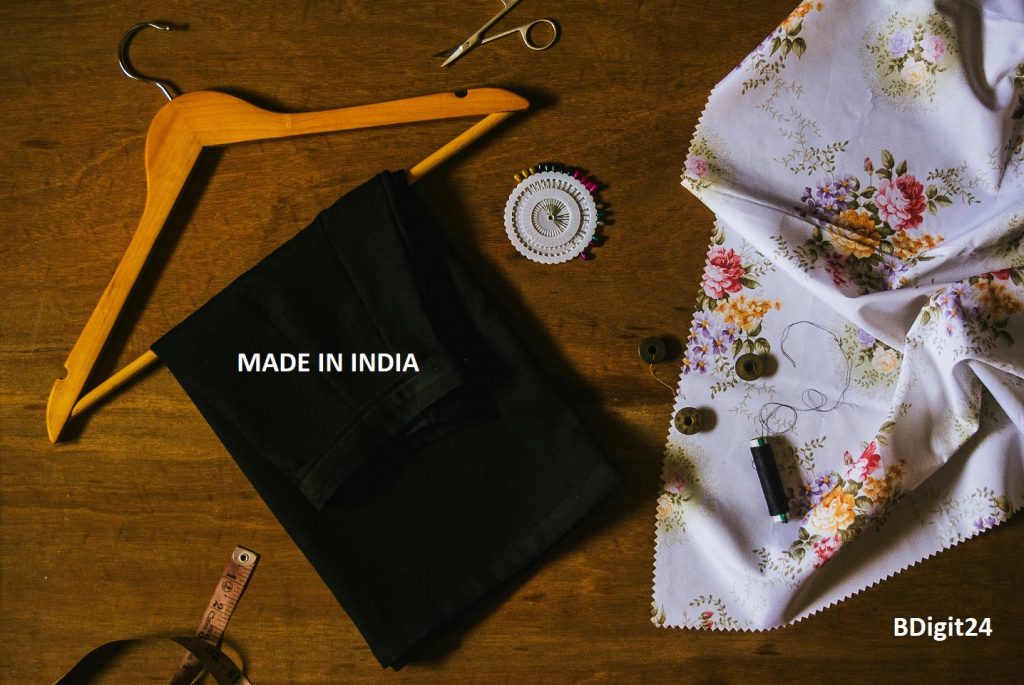Exploring India’s ambitious plan to expand its fashion industry while meeting sustainability targets by 2030.
India is set to significantly expand its fashion industry, targeting a market size of $350 billion by 2030. This ambitious plan is expected to generate over 2 million new jobs and enhance the country’s position as a global textile and apparel powerhouse. However, this rapid expansion comes at a time when the global fashion industry faces increasing pressure to adopt sustainable practices and reduce its environmental footprint. India must balance economic growth with sustainability, making this transformation both an opportunity and a challenge.
The Growth Plan: Key Initiatives and Investments To achieve this ambitious goal, India is focusing on several large-scale initiatives, including:
- PM MITRA Scheme – The government has launched the Pradhan Mantri Mega Integrated Textile Region and Apparel (PM MITRA) scheme, which involves the development of seven industrial mega-parks across the country. These parks aim to enhance infrastructure, boost exports, and create employment.
- Foreign and Domestic Investments – India is actively attracting investments from global fashion brands and textile manufacturers to support local production and innovation.
- Expansion of Manufacturing Hubs – States like Tamil Nadu, Gujarat, and Maharashtra are leading in textile production, with new industrial clusters being developed to improve supply chain efficiency.
These initiatives are not only expected to increase output but also strengthen India’s position in the global fashion and textile market.
The Sustainability Challenge: Reducing Emissions While Scaling Up The global fashion industry is under growing scrutiny for its environmental impact. According to the United Nations Environment Programme (UNEP), the fashion industry contributes 10% of global carbon emissions and 20% of global wastewater pollution. Recognizing this challenge, India is implementing several sustainability measures:
- Transitioning from Coal to Biomass for Thermal Energy – Many textile manufacturers still rely on coal-based power. India is encouraging a shift to biomass and other renewable energy sources to cut carbon emissions.
- Solar Energy Adoption – The government is promoting the use of solar power in textile factories to reduce dependence on fossil fuels. Incentives are being provided for solar panel installations in industrial zones.
- The Future Forward Factory Initiative – This initiative aims to modernize production units with sustainable and energy-efficient technologies.
- Greenfield Projects and Sustainable Manufacturing – Companies like Trimetro Garments are pioneering eco-friendly manufacturing processes, incorporating circular economy principles such as textile recycling and sustainable raw material sourcing.
Job Creation and Economic Impact The expansion of the fashion industry is expected to generate over 2 million jobs across various segments, including:
- Manufacturing and Production – Increased textile production will create employment opportunities in fabric processing, garment manufacturing, and quality control.
- Retail and E-commerce – With the rise of digital shopping platforms, jobs in fashion marketing, merchandising, and logistics are set to grow.
- Sustainability and Innovation – The push for greener fashion practices will open avenues for professionals in textile engineering, sustainable design, and environmental compliance.
India’s textile sector already employs over 45 million people, and with this expansion, it could become one of the largest employment generators in the country.
India’s Global Position: Competing with China and Bangladesh As India aims to triple its fashion industry, it faces competition from China and Bangladesh, two of the largest textile exporters. Key advantages that India holds include:
- Diversified Textile Production – India produces a wide range of textiles, from cotton and silk to synthetic fabrics, allowing for greater flexibility in catering to different market segments.
- Government Support and Policy Reforms – Trade policies and production-linked incentives (PLIs) are being introduced to encourage both domestic and foreign companies to invest in India.
- Sustainable Edge – With global brands increasingly demanding eco-friendly sourcing, India’s focus on green manufacturing could position it as a preferred supplier.
Future Outlook: Can India Achieve the $350 Billion Target? India’s ambitious plan to expand its fashion sector while meeting sustainability targets presents both challenges and opportunities. Success will depend on:
- Effective policy implementation – Ensuring smooth execution of PM MITRA mega-parks and sustainability programs.
- Industry-wide adoption of green practices – Encouraging manufacturers to integrate sustainable solutions across the supply chain.
- Investment in innovation and technology – Leveraging automation, digital fashion solutions, and smart textiles to enhance productivity and efficiency.
If executed well, India’s fashion industry could become a global leader, proving that economic growth and sustainability can go hand in hand.
#IndianFashion #SustainableFashion #TextileIndustry #FashionGrowth #GreenManufacturing #PMMITRA


